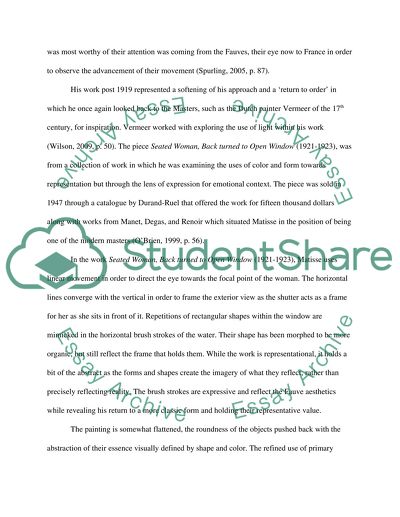Cite this document
(“Back turned to Open Window by Matisse Essay Example | Topics and Well Written Essays - 1750 words”, n.d.)
Retrieved from https://studentshare.org/visual-arts-film-studies/1409851-back-turned-to-open-window-by-matisse
Retrieved from https://studentshare.org/visual-arts-film-studies/1409851-back-turned-to-open-window-by-matisse
(Back Turned to Open Window by Matisse Essay Example | Topics and Well Written Essays - 1750 Words)
https://studentshare.org/visual-arts-film-studies/1409851-back-turned-to-open-window-by-matisse.
https://studentshare.org/visual-arts-film-studies/1409851-back-turned-to-open-window-by-matisse.
“Back Turned to Open Window by Matisse Essay Example | Topics and Well Written Essays - 1750 Words”, n.d. https://studentshare.org/visual-arts-film-studies/1409851-back-turned-to-open-window-by-matisse.


